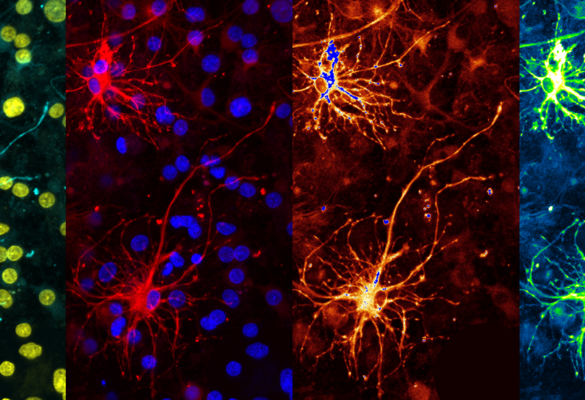OPTIClear: A Novel Tissue Clearing Agent for the Next Generation Histology
- Field
- Research Tools and Methods
- Reference No.
- IP00686
Background
- Traditionally, serial sectioning is required for investigators to visualize the internal structures of a non-transparent tissue. The sectioning process is tedious and may lead to section losses and distortions.
- Next generation histology enables high resolution, three-dimensional mapping of cellular projections and compositions within large pieces of tissues in a simple way, without traditional histological sectioning. And tissue clearing techniques are one of the key steps.
- However, existing clearing reagents usually require multiple steps for tissue treatment before clearing, and they cannot be applied to archived tissues fixed with formalin for a long time, and they may not be compatible with various fluorescent labeling.
- According to Stratistics MRC, the Global Histology & Cytology market is expected to grow from $8.95 billion in 2016 to reach $22.25 billion by 2023 with a CAGR of 13.9%.
Technology Overview
OPTIClear is a novel tissue clearing agent and it works by selectively adjusting the optical properties of tissue while leaving the structural components unchanged, minimizing tissue damage while achieving high tissue transparency. It is composed of three core components: (1) a homogenizing agent; (2) a cytoplasmic, water-soluble refractive index adjusting agent and (3) a membrane, lipid-soluble refractive index adjusting agent.
The prototypes have been made and tested with various tissues, including human brain tissue, mouse spine and rat kidneys.
.jpg)
.jpg)
This invention has been awarded Gold Medal at the 46th International Exhibition at Invention Geneva (IEIG). The article regarding this technology was published in Nature Communications (https://doi.org/10.1038/s41467-018-03359-w)
Benefits & Applications
Benefits
- Low viscosity, faster tissue clearing (6 hours clearing time for 1mm-thick tissue)
- Low osmolality, little tissue structure disruption
- Low concentration of chemicals, low manufacturing cost
- No use of detergents and denaturants, good retainment of lipid membranes within the tissue (compatible with lipophilic tracers labeling and EM analysis)
- Good clearing capabilities in hard-to clear human tissues (effective in clearing archival tissue fixed with formalin for 50 years)
- Applicable to various types of organs and tissues
- Long-time storage after tissue clearing
Applications
Tissue clearing for fresh and archival tissue, including formalin-fixed paraffin-embedded material.
Patents
- PCT application No. PCT/CN2017/117669 filed on 21 Dec, 2017
- US provisional application No. 62/438,124 filed on 22 Dec, 2016
IP Status
- Patent application submitted
Seeking
- Commercial partner
- Licensing
- Development partner


